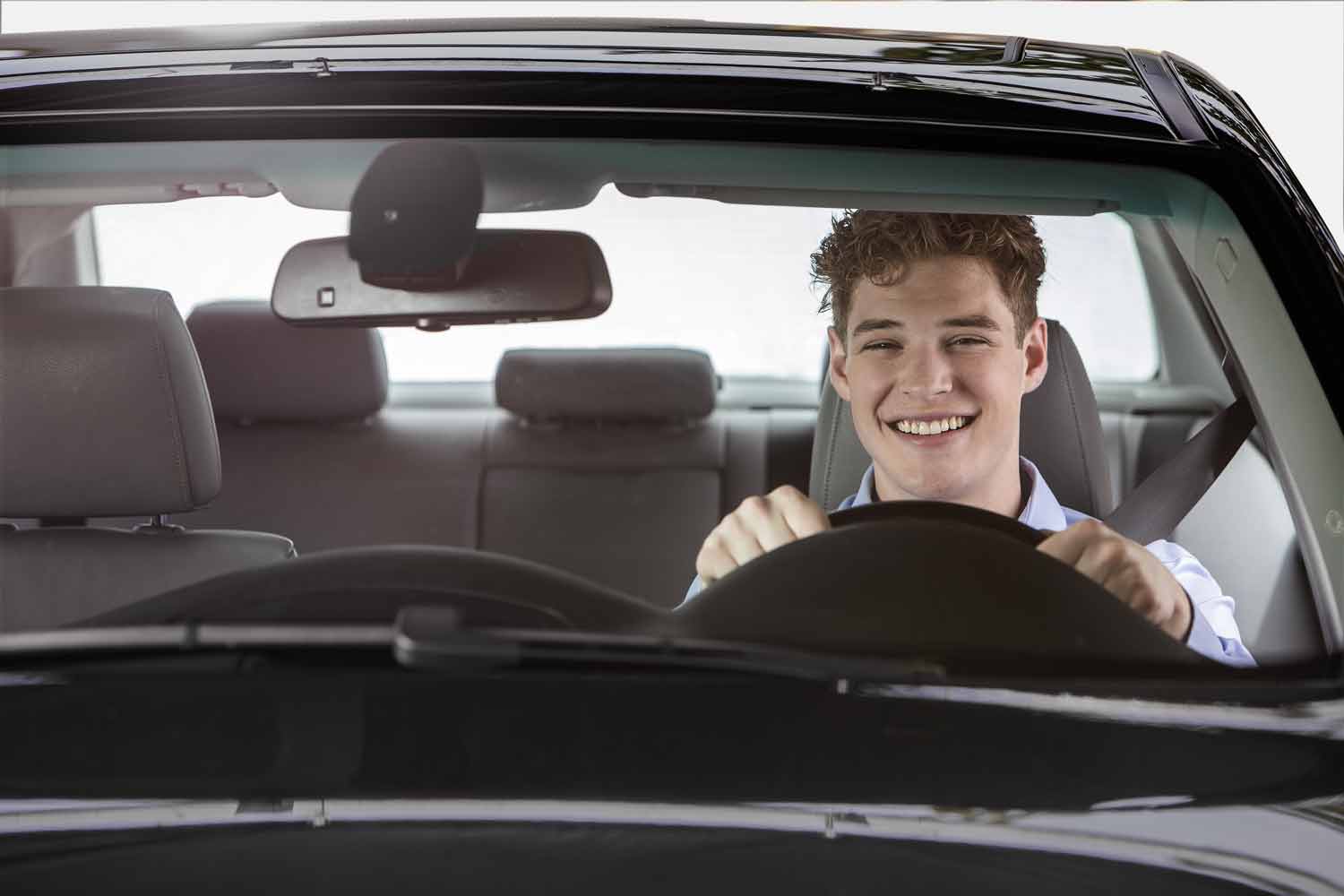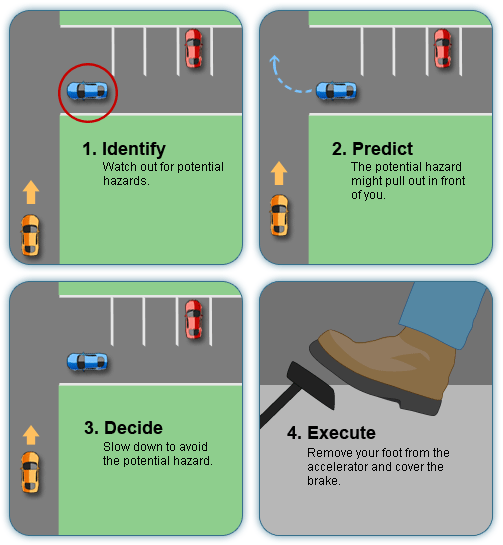How to Drive Defensively
Defensive driving is when you’re constantly alert to potential hazards and you actively look for ways to keep you and your vehicle safe. It starts from the moment you think about going somewhere until the moment you put the car back in the garage.
But how exactly does defensive driving work? What things should you look out for? Check out the video below for an overview of defensive driving.
The Importance of Driving Defensively
New, or novice, drivers tend to take more risks on the road than experienced drivers. Specifically, novice drivers are more likely to engage in the following:
- Speeding
- Allowing a shorter following distance between their car and the car in front of them
- Tailgating
- Driving through yellow lights
- Making illegal turns
- Making dangerous passes
- Not wearing safety belts
- Driving under the influence of drugs or alcohol
Novice drivers don’t always see their behavior as risky, and often don’t understand the level of danger involved. But there are other reasons novice drivers take risks behind the wheel: overconfidence in their abilities and a false understanding of the rewards and consequences of risky behavior.
 Novice Driver
Novice Driver
Another reason novice drivers are more likely to partake in risky driving behavior is because they overestimate the rewards of doing so and underestimate the consequences. It's incredibly important for novice drivers to understand defensive driving.
Experienced drivers may suffer from overconfidence as well. That's why so many drivers are required to take court-ordered defensive driving courses when they commit a traffic offense.
Let's take a look at some defensive driving strategies you can use every time you get behind the wheel.
IPDE
Part of your responsibility as a defensive driver is to compensate for unprepared roadway users by anticipating their actions. One way to do this is to practice IPDE: Identify, Predict, Decide, Execute.
 IPDE Steps
IPDE Steps
Identify. Before you can respond to a potential problem, you need to identify the hazard. To do this, you must always be scanning the roadway. Keep your eyes moving. What can you see behind you in your rearview mirror? Are the spaces around your vehicle open? Check in front of you. It’s important to scan at least a 12-to-15 second path of travel. This means looking ahead to an area that will take you 12-to-15 seconds to reach. This gives you time to prepare for a situation before it is in your immediate path.
If you can’t see 12 seconds ahead, you may need to adjust your speed (i.e., slow down). Sometimes you can adjust your lane position to give you a better view. The bottom line is, you need to be looking as far ahead as possible to identify factors that may interact with your path of travel. That way, you won’t be surprised by anything.
While you’re scanning, look for the following clues from other drivers:
- Actions - This includes distractions (such as cell phone use or passengers), appearing lost, or driving impaired.
- Vehicle signals - Look for indications that other drivers are turning or backing up, and watch for hazard lights or hand signals.
- Other indicators - Look for headlights, brake lights, and listen for horns.
Predict. After you identify a hazard, you must predict how it could affect your driving. For instance, if you’re in a quiet neighborhood with a lot of cars parked along the street and you see children playing in front of the houses, you might predict that a child could suddenly dart out into the roadway from behind a parked car. This could cause you to stop suddenly or swerve, which could easily cause a collision.
Decide. Now that you’ve predicted how a potential hazard could affect your driving, you need to decide on a course of action. In the situation mentioned above, you might decide to slow down so that you’re better prepared to stop quickly. To provide you with another possible scenario, imagine you’re on a busy highway. If the car in front of you were to stop suddenly, do you have spaces open to merge into? Did you leave yourself enough following distance to stop safely? The goal here is to decide on possible courses of action before you’re confronted with them.
Execute. Finally, once you decide on a course of action, execute it. Apply your brake gently to slow your vehicle, safely merge into another lane, or carry out whatever other decision you’ve made in the situation you’re facing.
The Smith System
Another defensive driving strategy you should use is the Smith System. The Smith System includes five key strategies for defensive driving:
- Aim high. Look as far up the roadway as possible. What’s going on in your path of travel 15, 20, and 30 seconds down the line? If you’re not actively searching this area, you won’t be able to identify any potential hazards and then you won’t be able to adequately prepare for them.
- Keep your eyes moving. Staring is a very dangerous thing to do while driving. For one thing, it narrows your field of view, meaning that you’re not alert to what’s going on around you. It can also lead to zoning out or not paying attention mentally to the roadway and the driving task.
- Get the big picture. Driving involves more than paying attention to your immediate path of travel. Is the roadway ahead of you wet or slick? Is there an ambulance with its siren blaring coming up behind you? Remember, scan your gates and your intended path of travel and know what’s going on all around you at all times.
- Make sure others see you. Keep your headlights on, even in the daytime, to make yourself more visible to other drivers. Use turn signals before turning, tap on your brakes in plenty of time before slowing down, and use your horn in emergency situations to alert other drivers of a potential collision. Don’t assume that other drivers are paying attention in the way they should be. Use extra precautions and take every opportunity you have to communicate as clearly as possible with other roadway users.
- Leave yourself a way out. When you stop at a red light, leave plenty of space between you and the car in front of you. If the driver in the car behind you isn’t paying attention, you may need extra room to pull forward or to pull out of the way to avoid being rear-ended. Similarly, try to leave your left or right gate open so you can pull into it in an emergency situation. Sometimes it may be quicker and safer to change lanes than to come to a complete stop. Always leave yourself space in case of an emergency.
Using defensive driving strategies like IPDE and the Smith System will help keep you and those around you safe on the roadway.
Take an Online Course to Learn More
If you enjoyed this article and are interested in learning more about driving-related topics, you should check out our courses on www.safe2drive.com.
We offer courses in a variety of topics including Defensive Driving and Driver Education. In addition to teaching you how to be a safe driver, our courses can help you dismiss a ticket, get your driver license, or even get an insurance discount. We also have courses specifically tailored to mature drivers (i.e., drivers age 55 and older) for insurance discounts.